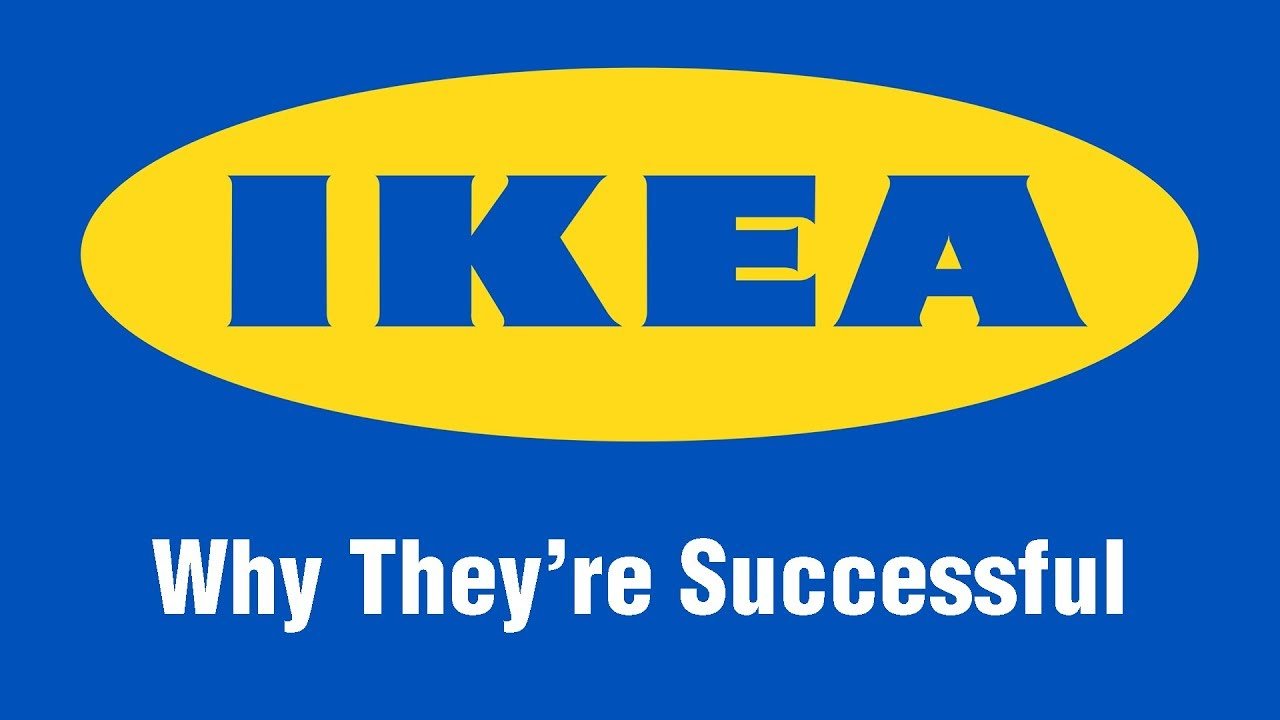Introduction
Guided by the vision of creating a better daily life for its customers, IKEA has grown to become the world’s largest furniture retailer, with over 422 stores in 50+ markets.
Striking the perfect balance between product quality and price, it’s no wonder that IKEA stands out as the first choice for furniture for everyone, from college students to long-time homeowners. Customers also take pride in building their own furniture, though it seems like a massive task at first.
But the main reason for IKEA’s rise to success – and its 1.579 billion dollars net income in 2021 – is its marketing strategy. Let’s discuss it in detail.
About IKEA

Ingvar Kamprad established IKEA in 1943 in Almhult, Sweden, at the tender age of 17. He started the company on a small scale by selling pens, wallets, picture frames, and jewelry under the brand’s name. But he knew he had to change his strategies to shift to a larger scale. When the post-war Swedish government built massive infrastructures and even supported home furnishing loans, Ingvar saw a business opportunity. He eventually ventured into selling mail-order furniture around 1948.
Early Challenges
In the 1950s, IKEA’s extremely affordable furniture allowed it to capture more and more of the market share. Swedish furniture retailers saw the company as a threat to their businesses.
So, the retailers resolved to pressure suppliers to boycott the IKEA brand. They also prevented Ingvar from exhibiting or visiting any furniture fairs.
IKEA saw this as an opportunity to look for partners overseas. Additionally, the problems created by retailers for IKEA led to it stopping its outsourcing of furniture design. Ingvar put together a design team in-house, which resulted in a further drop in its product prices.
Then, in 1955, he saw catalog manager Gillis Lundgren knock off a table’s legs because loading the bulky table into the back of his car was frustrating. And this is where the idea of selling “flat-pack” self-assembly furniture came to Ingvar’s mind. With IKEA’s iconic sales model established, the rest is history.

The company continued to grow, and is one of the world’s largest multinational companies today. But it faced more challenges in its growth stages, including:
- Generating awareness in new countries
- Meeting target demands without incurring losses
- Getting new customers
- Competitors selling the same products at a cheaper price
To overcome these challenges, IKEA had to distinguish itself in the market, not just through new product offerings but an efficient content marketing strategy too.
To garner support from investors and consumers, it was important to demonstrate to all major stakeholders that IKEA was genuinely committed to long-term investment in any country rather than just short-term gains.
Let us see how they implemented their content marketing globally to gain visibility and a consumer base.
How Did IKEA Become the King of Content Marketing?
To establish a distinctive presence in the retail furniture sector, IKEA focuses on branding content. It has been attracting customers with its distinctive and inventive content creation in commercials, catalogs, print advertisements, websites, and social media.
The finest part is that it effectively communicates the brand’s basic principles while incorporating entertainment and creativity. Here are IKEA’s best marketing campaigns and why they worked:
1. Launching Bookbook!

IKEA kept in mind its customer-centric approach in marketing and launched the brand’s 2015 catalog in the form of a digital book. According to IKEA’s “Chief Design Güru,” Jörgen Eghammer, “It’s not a digital book or an e-book.”
The sarcastic tonality of the ad helped it go viral with over 12 millions views on YouTube, hence helping it in grabbing customer attention.
2. Augmented Reality

IKEA emerged as one of the first furniture brands to implement augmented reality. Many customers didn’t know the first thing about measuring rooms and existing furniture. The “Place in Your Room” feature allowed customers to test out wanted items in their rooms.
It increased IKEA’s popularity by making it convenient to place all types of furniture in their room and judge their look, feel, and size.
3. “Moving Day!”

IKEA created this marketing ploy in Quebec, it grabbed the attention of onlookers. People received free cardboard moving boxes with helpful suggestions on them.
Those who engaged also got discounts on IKEA furniture, so they can decorate their new place as they please. The campaign increased in-store customers by 14 percent over that weekend itself.
4. Guerrilla Marketing

IKEA France employed guerilla marketing, installing a vertical “outdoor apartment” billboard to celebrate the opening of its 30th store.
This approach was creative and budget-friendly, attracting onlookers’ attention and improving store traffic.
5. Innovative Video Marketing

IKEA came up with innovative ideas to create engaging content on YouTube. Its ‘how to’ DIY videos and ‘dead drunk but trying’ videos are known to capture audience’s attention in a humorous yet smart way in order to boost sales.
These videos appeal to customers worldwide and increase the popularity of IKEA products.
What Makes IKEA’s Marketing Successful?

IKEA has advertised the products in a way that after purchasing them, buyers are under the following impression:
- Because the product is from a reputable company, I believe in it.
- My purchase was pocket-friendly.
- It was delivered with ease.
- It was a fun DIY project for me.
- The product is stylish and trendy.
- I’ll continue to tell practically everyone I meet how much I love IKEA products.
IKEA made sure that all these benefits of their brand were promoted to prospective clients via nearly all available marketing channels. And in this way, IKEA had one of the most effective marketing campaigns.
Key Takeaways From IKEA’s Marketing Strategy
There are some lessons to be learned from a brand that had a fantastic content strategy for all its products. The following are the main points to remember from IKEA’s marketing strategy:
- In-depth Research: The foundation of IKEA’s marketing approach has been the requirement for in-depth consumer and market research. The corporation spends a lot of money on research, performing everything from telephone and internet polls to sending experts to average people’s homes to understand the problems of their daily life.
- Emotional Connection: Richard La Graauw, the creative director of IKEA in the US says that “almost 20% of our buying decisions are based on logic and needs. 80% of our buying decisions are actually based on emotions and we actually try to make that connection or bridge.”
- Efficient Marketing: IKEA, unlike other companies, expanded its use of social media beyond the usual suspects like Instagram and Facebook to include platforms like YouTube and Pinterest. They used AR and VR in addition to this to keep their audience interested.
- New Add-ons: IKEA’s website and social media channels are frequently updated with the latest product offerings. As a result, users—particularly brand evangelists—talk more about the items with those who could later buy them.
- Branding That Reflects Core Values: To ensure that its basic principles of simplicity, cost-consciousness, and renewal are instilled in the customers’ minds, IKEA adheres to them in all they do, including their logo and advertising campaigns.
Conclusion
IKEA differentiated itself from its rivals by emphasizing the needs of its customers. The company was able to preserve its profitability and competitiveness because of this strategy.
They made sure to provide high-quality furniture at competitive prices in order to satisfy the demands of contemporary customers.
IKEA, therefore, pops up first when the majority of consumers think about buying furniture. This is because of its distinct design, customizability, pricing, and creative marketing efforts.
Talk to our experts today if you want a content strategy to put your business on the map.


